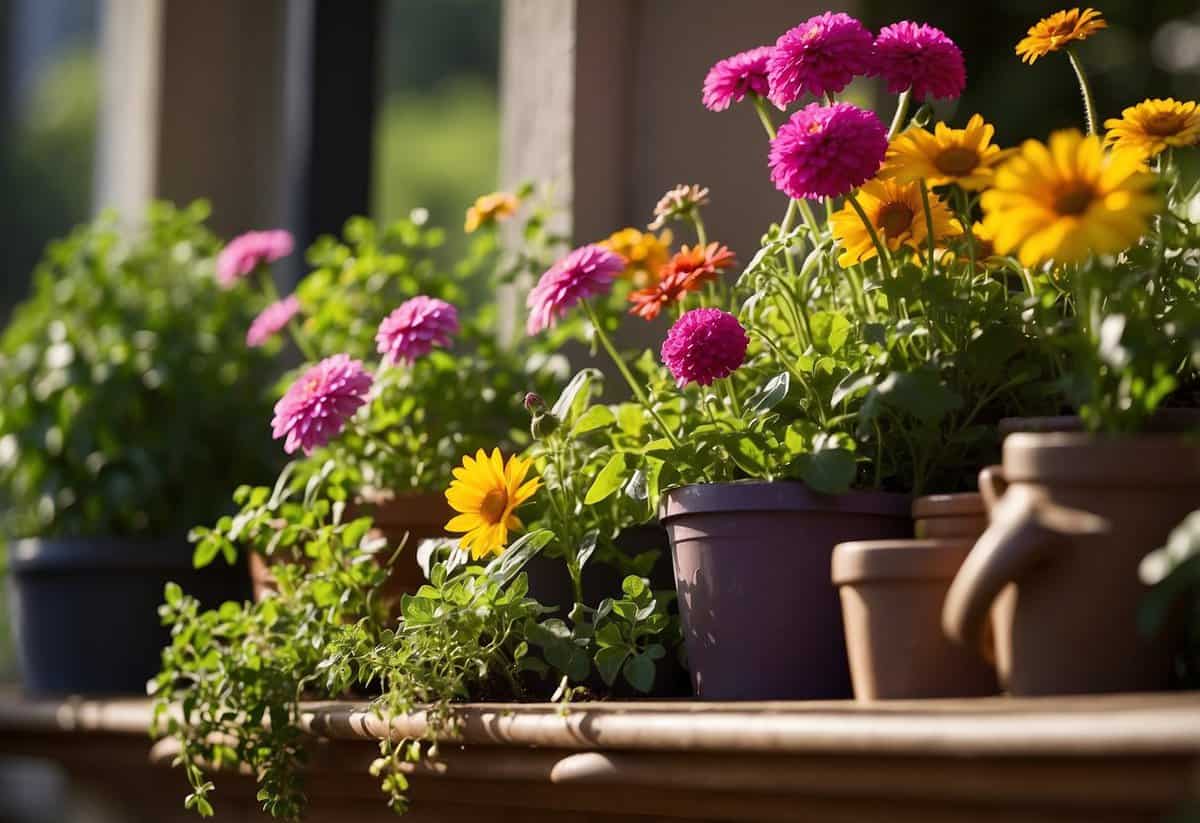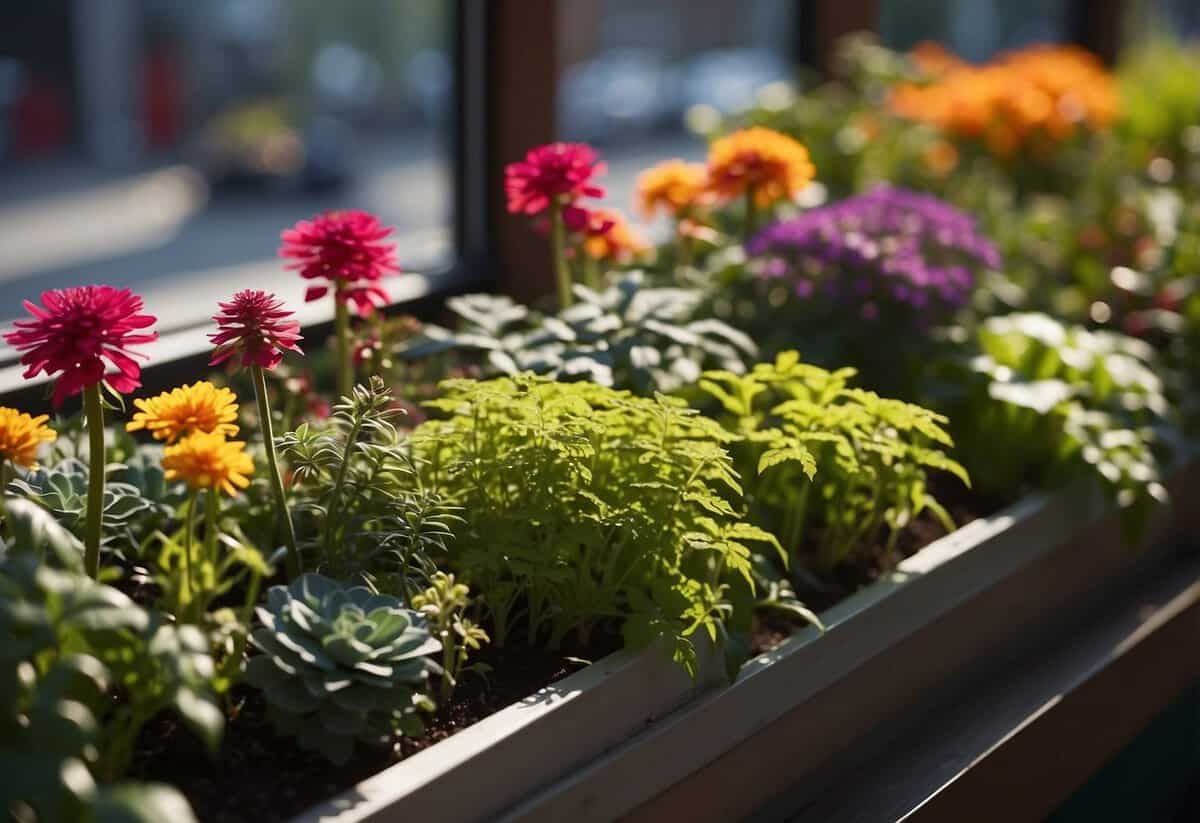Tips for Starting a Window Box Garden: Your Cozy Guide to Urban Gardening
Starting a window box garden is a fun and rewarding way to bring nature closer to your living space. Whether you have a small apartment or a large house, window box gardens can add beauty and greenery to any setting. They are also perfect for people with limited gardening space.

Creating a window box garden allows you to grow flowers, herbs, or even vegetables right outside your window. It’s a great way to personalize your home and enjoy fresh plants throughout the year. With just a little planning and care, your window box garden can thrive and brighten up your home.
1) Choose the Right Window Box

Choosing the right window box is key to a great garden. Window boxes come in different materials like wood, plastic, and metal. Each material has its own benefits.
Make your window box a bit bigger than you think you need. Larger boxes reduce watering time and give your plants more room to grow.
Match the style of your home with the window box. Whether you like traditional rectangular designs or more creative styles like hanging baskets, the box should complement your home’s aesthetic.
2) Pick Easy-to-Grow Plants

Choosing the right plants is key to a successful window box garden. Opt for plants that are known to thrive in smaller spaces.
Consider planting sun-loving verbena, which cascades beautifully and comes in vibrant colors like purple and pink. Additionally, chartreuse coleus adds a bright touch and is easy to care for.
Another good option is ivy, which grows well and adds a lovely trailing effect. For a splash of color, you can’t go wrong with colorful blooms like marigolds or petunias.
3) Use Good Quality Soil

Start with fresh potting mix for your window box garden. This provides a clean slate for your plants.
Adding compost, perlite, and vermiculite can improve the soil. These materials boost nutrients, drainage, and aeration, which helps your plants thrive.
Make sure to use soil that is light and drains well. Avoid heavy garden soil to prevent drainage issues.
4) Ensure Proper Drainage

Good drainage keeps your plants happy and healthy. Choose a window box with drainage holes to let excess water escape.
If your box doesn’t have drainage holes, add a layer of gravel or small stones at the bottom before adding soil. This helps prevent waterlogging.
Use high-quality potting mix designed for containers. It drains better than regular garden soil and ensures your plants get the right nutrients. For more tips, check out this guide on caring for window box plants.
5) Choose Companion Plants

Picking the right companion plants is key for a thriving window box garden. Geraniums pair well with Alyssum, adding texture and color. Ivy is also great for its trailing effect.
Try adding Blazin Rose Iresine to bring a vibrant pop of red. Petunias and marigolds can add brightness but may need replacing annually if you’re in a colder climate. Keep combinations interesting and colorful for a cheerful display.
6) Water Regularly, but Not Too Much

Watering your window box garden correctly is essential. You want to keep the soil moist but not soaked.
Too much water can lead to root rot and other issues. Make sure your window box has good drainage to avoid waterlogging.
Check the soil daily, especially in hot weather. If the top inch feels dry, it’s time to water.
By following these simple tips, your window box garden can thrive.
7) Fertilize Wisely

It’s important to choose the right fertilizer for your window box garden. Using a slow-release fertilizer can help nourish your plants over time.
Make sure to follow the manufacturer’s directions to avoid over-fertilizing. This helps keep your plants healthy and vibrant.
Organic fertilizers are also a great option. They improve soil quality and are safer for the environment. Happy gardening!
8) Watch for Pests

Keep an eye on your window box for pests. Aphids, spider mites, and whiteflies are common problems. They can damage your plants by sucking their sap.
If you spot pests, treat them quickly. Use insecticidal soap or neem oil for natural pest control. You can also remove them by hand.
Regularly checking your plants helps you catch pests early. Healthy plants are less likely to suffer from pest issues, so make sure your plants are well-watered and cared for.
9) Rotate Plants Seasonally

Switch up your plants based on the season for a great-looking window box. In spring, plant vibrant flowers like pansies or petunias. During summer, opt for sun-loving plants like marigolds or zinnias.
In fall, consider planting kale or mums. Winter can feature hardy evergreens or cold-tolerant herbs. This rotation keeps your window box beautiful all year.
10) Add Mulch for Moisture Retention

Mulch helps keep the soil in your window box garden moist by reducing water evaporation. This means you won’t need to water as often, which is great for busy gardeners.
Spread a 2 to 4-inch layer of mulch on top of the soil. Make sure it’s not too thick so rainwater can still reach the roots.
Using mulch also helps prevent weeds from growing and keeps your plants healthier.
Benefits of a Window Box Garden

Having a window box garden can provide several advantages such as making urban spaces greener, enhancing the look of your home, and allowing you to grow your own herbs and vegetables.
Improving Urban Spaces
A window box garden helps to green up urban spaces. Cities and towns often lack ample green areas, but window boxes can add a touch of nature to your surroundings.
These gardens can improve air quality by filtering pollutants. They can also attract pollinators like bees and butterflies, even in dense urban areas.
Adding window boxes to city spaces makes the area more inviting and pleasant. People are more likely to feel relaxed and happy when they see plants and flowers.
Enhancing Home Aesthetics
A window box can greatly enhance the appearance of your home. Whether you live in a house or an apartment, adding a window box creates an attractive and welcoming look.
Colorful flowers and lush greenery contribute to curb appeal. They make your home stand out in the neighborhood.
Window boxes are also versatile, allowing you to experiment with different plants and styles. They can be tailored to match the architecture of your home, adding to its visual appeal.
Growing Fresh Herbs and Vegetables
Growing your own herbs and vegetables in a window box is both convenient and rewarding. You can have fresh produce right outside your window.
Herbs like basil, parsley, and mint thrive in small spaces. You can pick them fresh for your meals, enhancing flavor and nutrition.
Vegetables such as lettuce, cherry tomatoes, and radishes can also be grown in window boxes, providing a fresh supply of food with minimal space requirements.
Having a variety of plants in your window box can also serve as a small, personal garden, adding both beauty and utility to your home.
Choosing the Right Plants

Picking the right plants for your window box garden involves understanding the sunlight your window receives and choosing plants that thrive in those conditions. It’s also important to select plants that complement each other and fit your aesthetic.
Considering Sunlight and Shade
The amount of sunlight your window box receives greatly impacts which plants will thrive. A window facing south usually gets the most sun, while north-facing windows receive the least.
For sunny locations, choose plants that love full sun. Petunias, marigolds, and zinnias are great choices. These plants thrive in 6-8 hours of direct sunlight.
If your window box is in a shaded area, opt for shade-loving plants like impatiens and coleus. These plants can grow well with only a few hours of indirect light each day.
Selecting Suitable Plant Varieties
Once you know your sunlight conditions, select plants that fit well together. Aim for a mix of heights, colors, and textures.
Choose a focal plant, like an ivy ball topiary or coleus, to add structure. Surround it with filler plants like caladium or marigolds for color and contrast.
For a cohesive look, repeat groups of plants within the box. This creates a pleasing and organized appearance.
Lastly, make sure the plants you choose have similar water and soil needs. This will ensure that all plants stay healthy together in the window box.







